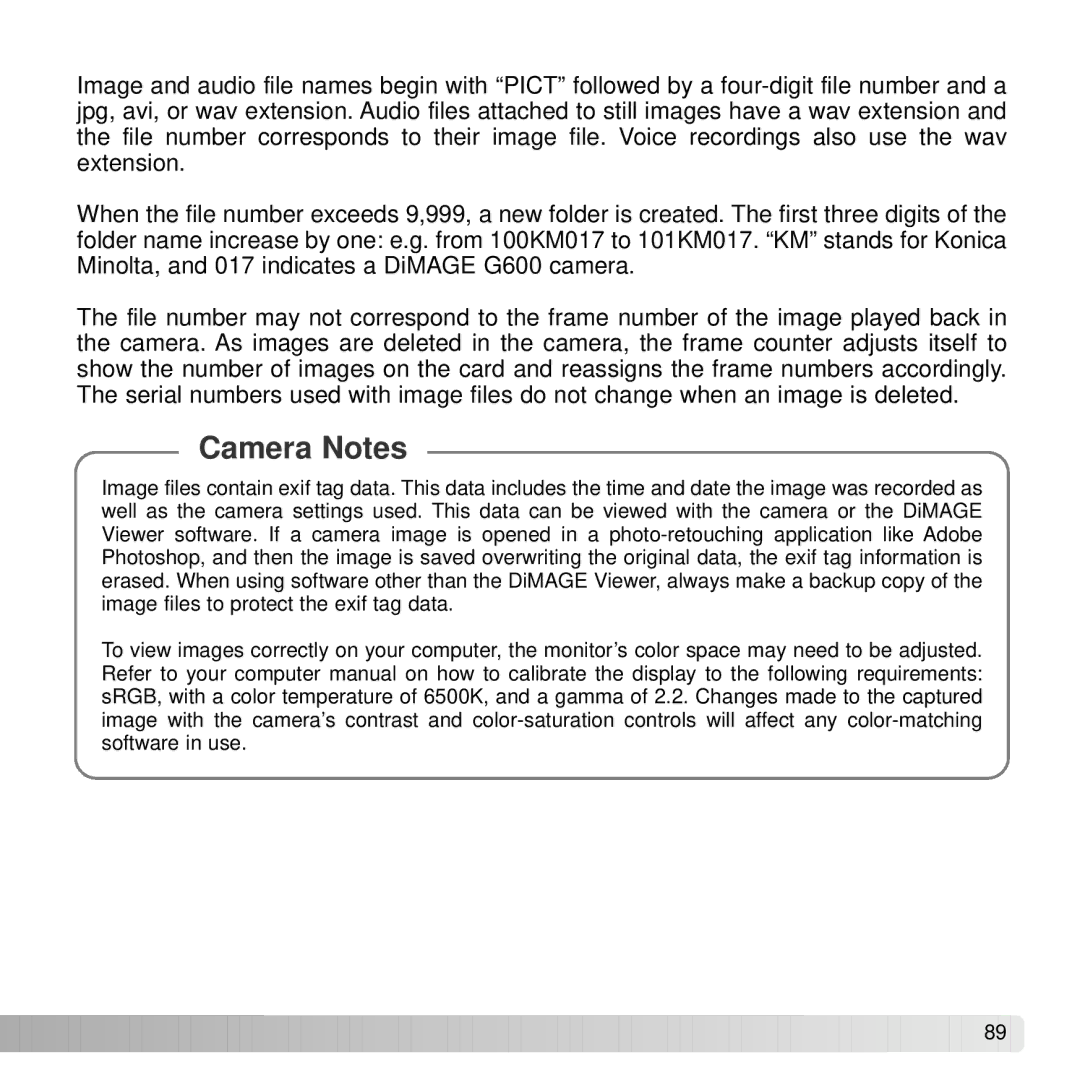
Image and audio file names begin with “PICT” followed by a
When the file number exceeds 9,999, a new folder is created. The first three digits of the folder name increase by one: e.g. from 100KM017 to 101KM017. “KM” stands for Konica Minolta, and 017 indicates a DiMAGE G600 camera.
The file number may not correspond to the frame number of the image played back in the camera. As images are deleted in the camera, the frame counter adjusts itself to show the number of images on the card and reassigns the frame numbers accordingly. The serial numbers used with image files do not change when an image is deleted.
Camera Notes
Image files contain exif tag data. This data includes the time and date the image was recorded as well as the camera settings used. This data can be viewed with the camera or the DiMAGE Viewer software. If a camera image is opened in a
To view images correctly on your computer, the monitor’s color space may need to be adjusted. Refer to your computer manual on how to calibrate the display to the following requirements: sRGB, with a color temperature of 6500K, and a gamma of 2.2. Changes made to the captured image with the camera’s contrast and
![]()
![]()
![]()
![]()
![]()
![]()
![]()
![]()
![]()
![]()
![]()
![]()
![]()
![]()
![]()
![]()
![]()
![]()
![]()
![]()
![]()
![]()
![]()
![]()
![]()
![]()
![]()
![]()
![]()
![]()
![]()
![]()
![]()
![]()
![]()
![]()
![]()
![]()
![]()
![]()
![]()
![]()
![]() 89
89 ![]()
